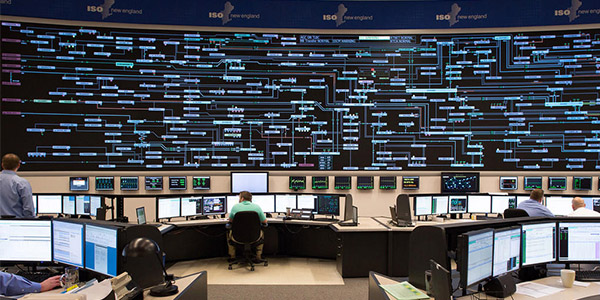Last week’s joint meeting of the NEPOOL Markets and Reliability committees produced a consensus framework document and assumptions for Phase 1 of the Future Grid Reliability Study, which is intended to predict the impact of New England states’ policies to reduce carbon emissions and electrify buildings and transportation as part of the Future Grid Initiative.
The framework document, developed by stakeholders at the MC/RC with support from ISO-NE and the New England States Committee on Electricity, consists of several analyses using different computer models. No single model could address the range of issues that stakeholders sought to assess. The analyses will be conducted in a staggered, iterative approach, with the results from one analysis informing decisions about what to model or remodel in other analyses.
Phase 1 encompasses both economic and engineering analyses. Compliance with energy and environmental laws across the region is expected to result in changes to power generation and electricity use. Generators that do not emit carbon will likely produce a much more significant percentage of the region’s power supply. Electrification of the building and transportation sectors could significantly change load amounts, peaks and profiles.
The economic analyses — production cost and ancillary services simulations and revenue sufficiency — seek to answers to questions such as what the forecasted market revenues are and if they will be sufficient to attract and retain the different types of resources needed in the future to operate the system reliably. The engineering analyses — ancillary services simulation, resource adequacy screen, and the probabilistic availability and system security analyses — will determine the conditions that will likely present operational or reliability issues, the nature of those issues, and whether the system will be able to operate reliably when variable energy resources are the predominant generation resources.
NEPOOL formally submitted the Phase 1 work as a 2021 Economic Study Request on March 12, and the RTO said it has the software to perform the work.
ISO-NE said it would continue to review the framework document and associated assumptions to identify additional areas for clarification as it starts to build analysis models in GridView and EPECS. Preliminary GridView results, including sensitivities and relevant alternative scenarios, will be presented at the June 16 PAC meeting. EPECS preliminary results are expected in late summer, and MARS simulations will start later in 2021, with results by January 2022.
The final production cost simulation is scheduled for September 2021 to March 2022, and the ancillary services simulation from September 2021 to January 2022. The final report for Phase 1 will be written between January and March 2022.
As for Phase 2, the committees decided at their Feb. 26 meeting to pause work on it. A paper was posted that outlines the work that has been done so far on Phase 2 to develop a partial draft framework. It also notes that timing and details require further consideration. Ultimately, the paper intends to serve as a refresher and starting point for when the committees resume work on Phase 2. ISO-NE has previously said that it lacks the tools to conduct Phase 2 analyses that consist of revenue sufficiency in the capacity market and transmission thermal and voltage impacts, and recommends that NEPOOL hire a consultant.




